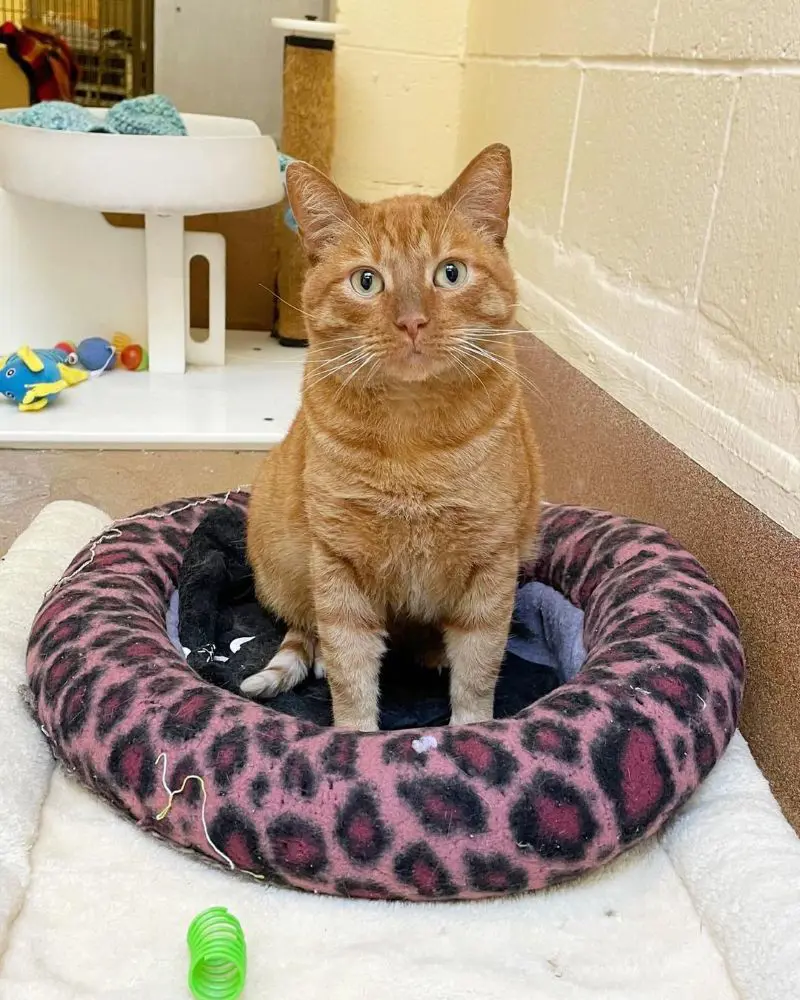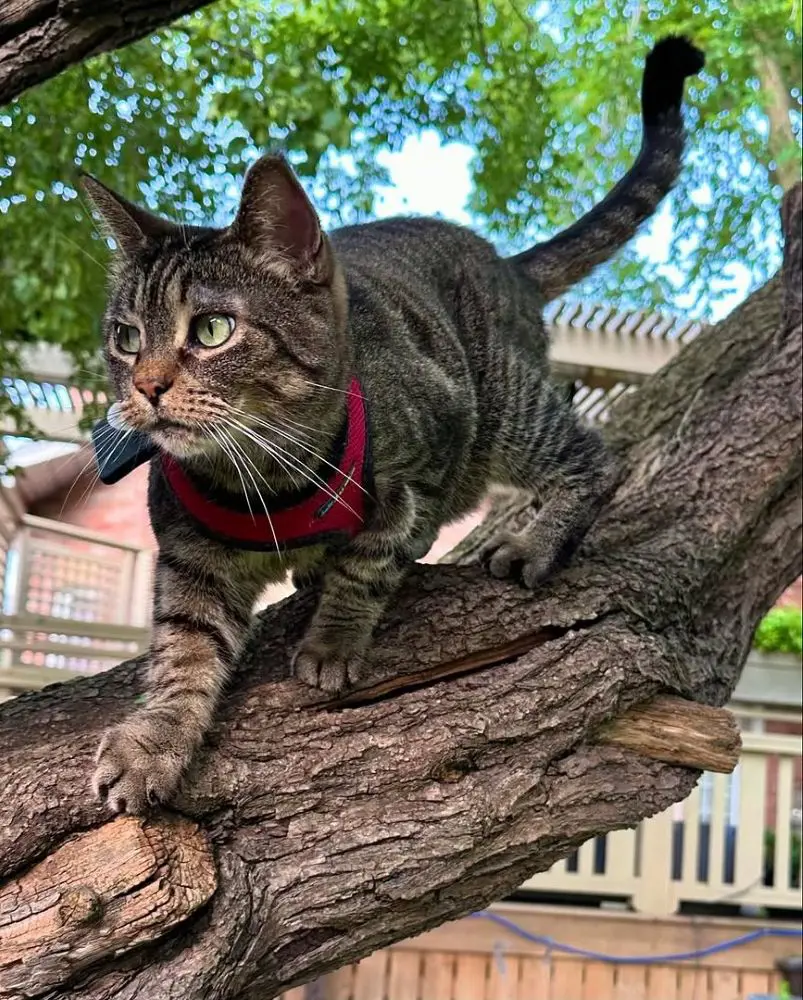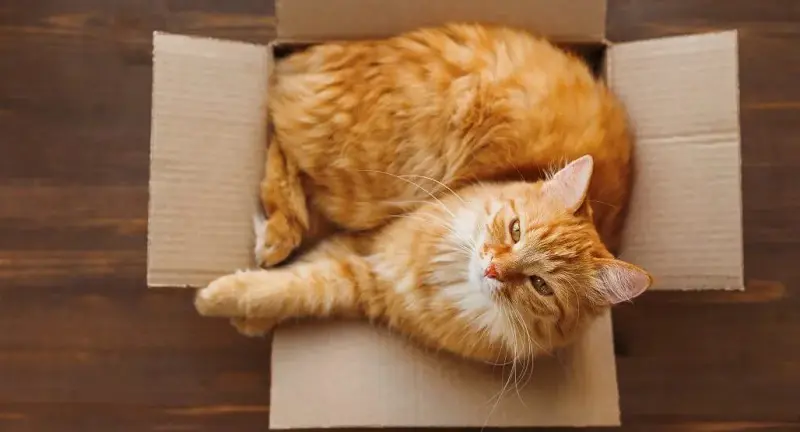How To Find A Lost Cat

You wake up one morning and notice that your cat is gone. This is a recurring scenario that many pet owners experience, particularly in cats who were previously feral.
In normal circumstances, your cat will return in a few hours or the next day. However, there are some instances where the cat may get truly lost and find it too challenging to come back.
As a pet owner, losing your cat is a heartbreaking experience that can haunt them emotionally for years. So, what can you do to make sure that your pet is safely back home? Let's find out!
1. Search Nearby
In most cases of a lost cat, the missing pet is hiding somewhere less than 600 yards. So, a thorough search of the neighborhood is preliminary before you use other measures.
Domesticated cats, especially those that mostly live indoors, aren't very wary of humans. They might wander off to a neighborhood home, and if it doesn't have a collar, the neighbor may feed and shelter the cat, thinking it is a stray.
So, as soon as you find out that your cat is missing, make sure to inform all your neighbors in the hope that one of them is unknowingly harboring a lost cat.
2. Use Food Or Treats

Foods and treats are strong motivators to cats, especially if they are hungry. If your cat is somewhere around, it'll be instantly intrigued by the smell of the food and will approach you.
Moreover, take some of your cat's favorite foods and treats to spots where your pet usually hangs out. It'll be attracted by the food scent and will immediately follow the trail towards you.
You can also leave traps with food as bait to find your cat; however, this trick is also likely to attract other animals, creating additional danger for the cat.
3. Call Their Name
Searching for a lost cat throughout the neighborhood might not be enough if the cat is hiding somewhere; it may perceive the rescuers as potential threats. It's crucial to call out its name for the cat to recognize that you are actively seeking your companion.
The calling by-their-names technique is most effective during early morning and evening as these times are normally quiet. Also, cats often go in search of food during dusk and dawn, giving the pet owner a higher chance to find their lost cat.
4. Set Up A Safe Space

Indoor cats, which are mostly kept inside homes, may find it difficult to return once they escape the indoor setting. The cat may not recognize the outer part of the house, stumping on their motivations to come back.
However, if you have created a safe space, with the cat's toys and familiar scents, the feline might recognize their homes and come back. Meanwhile, experts suggest that putting their litter boxes out might not be a sound idea, as the smell cat attract other cats and predators to your home.
5. Ask Neighbors
As we've discussed above, most cats that get lost are usually within the vicinity of your neighborhood. That's why it's so important to talk to your neighbor before contacting the authorities.
If your cat doesn't have a collar or an ID tag, your neighbor could have mistaken it to be a stray cat and decided to shelter it. Cats love to go places where they feel welcomed, particularly through food and treats. If any individual who lives nearby is overly friendly with cats or likes to feed them often, contact them and ask if they know the feline's whereabouts.
6. Post Flyers

As a cat owner, you must have a few pictures of your cat on your smartphone. Using the latest photo of your cat, create flyers to distribute in nearby areas and locations where your cats may have gone. These flyers should contain clear information about the cat, including their names, any distinctive features, and their last known locations.
While you should ask the assistance of anyone willing to help, don't try to lure more people into searching by offering more rewards. In most cases, individuals who are there for the reward will try to scam into thinking they found the cat or extort money if they actually found it.
7. Use Social Media
In this digital age, social media has become the most powerful tool to connect with other people in your community. Create social media posts, highlighting the unique characteristics of your pet cat and urging netizens to be aware of the lost cat.
Additionally, you'll find several social media platforms like Facebook and Instagram with groups that work specifically for the help and rescue of lost pets. Contacting these groups will drastically improve the chance of recovering your cat.
8. Check Animal Shelters

When trying to recover a lost cat, checking out the local animal shelters can come in handy as these are often the first places someone might bring a found pet. Many well-meaning individuals who discover stray cats take them to shelters, believing it is the safest and most reliable way to reunite them with their owners.
Animal shelters also keep detailed records and may post photos of found animals, making it easier for you to identify your cat. Even if your cat isn’t currently at a shelter, filing a report or leaving your contact details can help in case it is brought in later. Shelters normally only have a limited holding period for stray animals, so acting quickly increases the likelihood of a reunion.
9. Set Up A Camera
While setting up cameras might not necessarily keep a cat from getting lost, it will certainly help trace the steps of the feline, giving pet owners a clue on where their beloved companions might have gone.
Apart from tracking their initial steps, the camera will also show you if your pet returned at any point in time or if something unfortunate happened to the cat.
10. Walk the Area

As cats become more active at night, walk around your neighborhood with a flashlight to detect any feline activity in your surrounding area. Check different hiding spots your pet may frequent; don't forget to call out their names as you search for them.
If your cat is hanging out somewhere in the dark, the bright light and your soothing sound instantly attract its attention.
11. Use Familiar Sounds
Cats are naturally drawn to things they recognize, especially in stressful situations. Calling their name, shaking a treat bag, or jingling a favorite toy can capture their attention and provide comfort, prompting them to reveal their hiding spot. These sounds can cut through fear and disorientation, reminding your cat of safety and familiarity.
Cats are also more likely to respond to these cues during quieter times, like early morning or late evening, when the environment is less noisy and intimidating. Playing recordings of your voice or sounds they associate with feeding or playtime can be particularly effective in coaxing them out of hiding.
How To Prevent Cats From Getting Lost?

Unfortunately, not all cats will be found, once they get lost. Therefore, the safe bet is to stop your pet from wandering off in the first place.
While these measures do not guarantee that your cat won't get lost, these are the best methods to prevent the tragic loss.
1. Microchip And ID Tags
Both of these devices serve the same purpose by providing the details of the lost cat and its owner to the potential founder/rescuer of the cat. ID tags are attached to the collar, whereas microchips are planted under the skin. Although these tools have the same function, getting both drastically increases the chance of recovering the cat.
For instance, ID tags can break from the collar; the letters imprinted on these tags can fade with time. On the other hand, many individuals may not have the device to scan the microchip. So, getting both is the best way to increase the possibility of your cat being found.
2. Keep Cat Indoors
Creating a cozy indoor setup will work as a distraction from the outer world. Bored cats often attempt to escape from their homes, with some even succeeding in running away.
However, the outer world isn't the ideal place for a domestic cat; anything from an abusive person to a wild animal can pose significant threats to their survival. To safeguard your pet from the real world, keep your cat indoors most of the time.
While you can take them on occasional walks, always make sure the walk is supervised and the cat is on a leash. Similarly, you can also build an outdoor catio to provide a clear view of the outdoors, while preventing your cat from running away.
3. Supervised Outdoor Time
As mentioned above, you're bound to let the cat out at some point. However, instead of worrying about whether your cat will get lost, make outdoor time a joint activity for both of you.
Always keep your cat supervised when you let them outdoors. This will not only keep your pet safe, but the outdoor time together will also help create a solid bonding moment for a feline and its owner.
4. Spay or Neuter Your Cat
Spayed or neutered cats often experience a reduction in the will to wander off or get lost; these procedures address a cat's instincts that drive roaming behavior. On the other hand, unaltered cats often seek mates, leading them to explore unfamiliar areas.
For male cats, neutering curbs their territorial instincts and the urge to roam in search of females. Intact males can wander long distances, sometimes several miles, to find a mate.
Similarly, spaying female cats eliminates their heat cycles, which are accompanied by behaviors like yowling and attempts to escape. When in heat, female cats may actively seek out males or become more adventurous in exploring their surroundings.
5. Use GPS or Bluetooth Trackers
Lost cats with GPS or Bluetooth trackers are more likely to be found than those without these tracking devices. By providing real-time location updates, GPS trackers allow owners to pinpoint the cat’s whereabouts, even if they wander far; this is particularly useful for outdoor or adventurous cats.
On the other hand, Bluetooth trackers, while limited to a shorter range, can still be effective in densely populated areas where they can connect to nearby devices. Studies and anecdotal evidence suggest that trackers greatly improve recovery rates, as owners can act quickly to locate their pets.
What Are The Chances Of Finding A Lost Cat

Lost cats have a high possibility of getting found, especially when swift and persistent efforts are made. Studies suggest that around 74% of lost cats are found, with most returning home on their own or being located within their immediate surroundings.
As territorial animals, cats tend to hide nearby when scared, often within a three to five-house radius of their home. Conduct a thorough search, particularly in hiding spots like bushes, under porches, or in garages, to increase the chances of recovery.
The likelihood of finding a lost cat also depends on their personality and the circumstances of their disappearance. Indoor cats, for example, are more likely to stay close to home but may hide for longer periods due to unfamiliar outdoor stimuli. Conversely, outdoor cats may roam farther and make their recovery more challenging.
Can Cats Find Their Way Home If Lost?
Due to their excellent homing instincts, cats possess a remarkable ability to find their way home. While not all lost cats can make their way back, many demonstrate an impressive capacity to navigate even from unfamiliar places. This ability is rooted in their acute senses and environmental awareness.
The key factor that determines whether the cat can return is its exceptional sense of smell. Cats can recognize familiar scents, such as those from their home or their owner’s belongings, even from considerable distances. These scent trails act as a guide, helping them retrace their steps. Additionally, their acute hearing allows them to pick up familiar sounds, including their owner’s voice or household noises.
Moreover, felines are also thought to rely on visual landmarks and, in some cases, the Earth’s magnetic fields to navigate. Like other animals with strong homing instincts, they may use these cues to orient themselves and determine the direction of home. This ability is particularly evident in outdoor cats accustomed to roaming larger territories.
Recent posts
Cats
Why Cats Run Away?
Getting a cat to stay indoors is a challenge most cat owners face, especially if their pet is used to roam outdoors. While dogs can be easily confined indoors, cats are excellent climbers who can squeeze through the tiniest of holes. What is you wake...
18 Low Maintenance Cat For Busy Owners
Adopting a cat as a busy owner can be hard as it requires a big commitment and care. There are several cats that do not require much effort and are perfect for those with hectic schedules. It is important to understand their grooming needs along with...
Why Do Cats Like Boxes
Anyone who has spent significant time around a cat is familiar with the purring creature’s love of boxes and other small spaces. Immediately after you remove an item from its cardboard container, your furry feline friend checks out the empty bo...
Cat Toe Beans: 10 Surprising Facts About Feline's Feet
Also referred to as digital pads, cat toe beans are by far one of the most adorable features in a domestic feline. While these soft beans look vulnerable, the pads are extremely handy in movements across rough terrains or other activities like climbi...
Do Cats Get Cold, How Cold Is Too Cold For Cats?
Cats are fascinating creatures with unique physiological and behavioral traits. While they are reputed for being independent and adaptable, it’s crucial to understand their limitations when dealing with cold weather. Cats are resilient but not ...
How Many Teeth Do Cats Have?
Cat teeth are important for survival and daily life because they help cats hunt, tear meat, and eat easily. Their teeth are viewed not only as functional but also as indicators of their overall health. Grooming is one function these teeth serve, alon...







